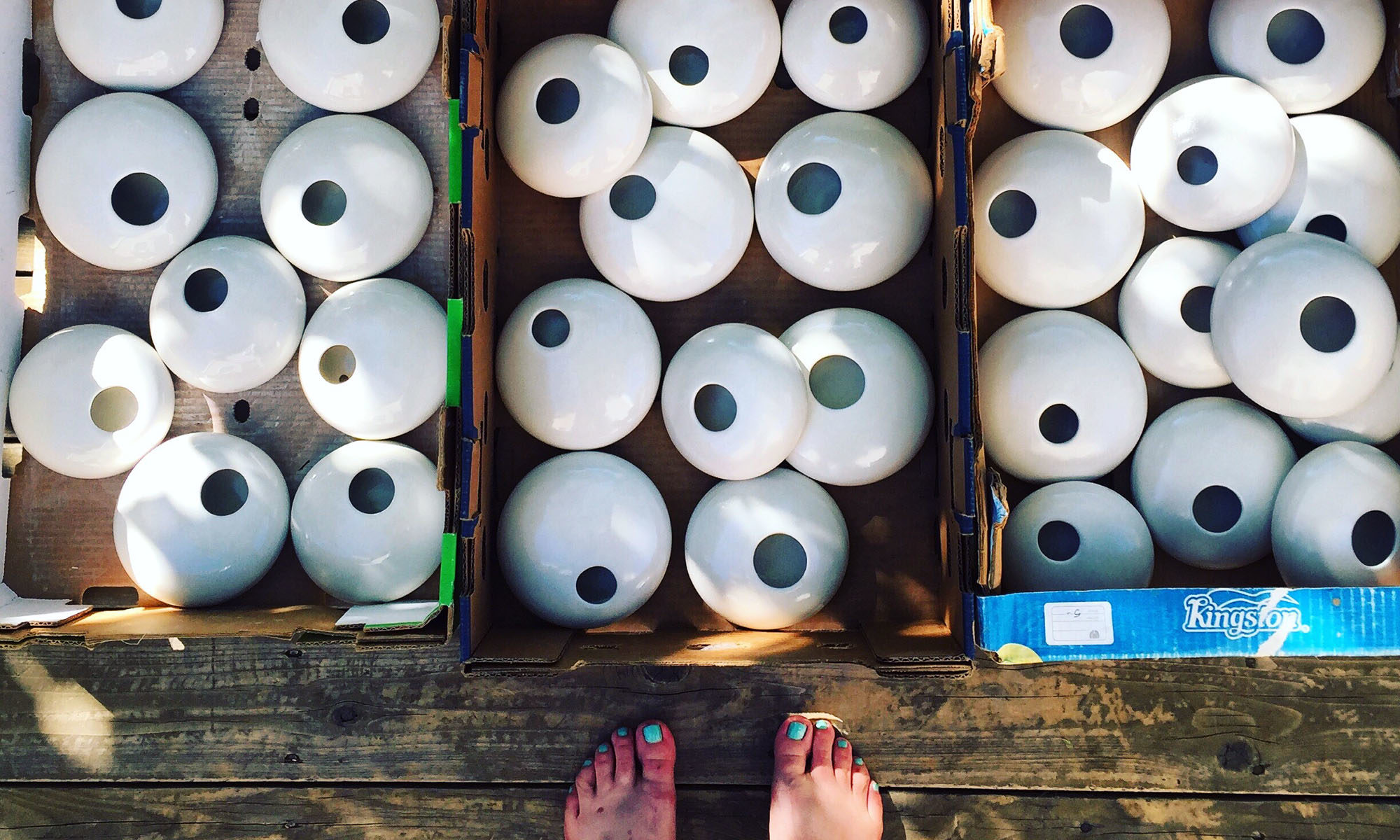
Wheel Thrown Stoneware Planters
I make private label stoneware planters for a local Colorado business, River North Workshop. What is private label? After making these planters, I stamp RNW on the bottom instead of my name. I also worked with the owner to develop a style and aesthetic, that is frankly very dissimilar to my more graphic work. The shape of the planter is one that I make for my own work, but the more minimal glaze and effect is something that I agreed to do just for RNW.
River North Workshop
River North Workshop is located in the RiNo, or River North Art District in Denver, CO. For those of you that may be unfamiliar with Denver, it’s an industrial area that is undergoing massive redevelopment north of downtown.
If you’re in Denver, check out the shop – it is a really thoughtfully curated, independently owned homewares shop. River North Workshop also hosts fun one day classes – check out Dabble Denver for offerings.
I recently received a purchase order for more planters and decided to bust these out this week so that I can deliver them this Saturday before summer really kicks off.
How I Make Wheel Thrown Stoneware Planters
When working on a wholesale order, I know that I need to make sure that all my deliverables are the same or similar size. Basically, I need to make sure that they’re consistent. I’ve worked out a system, where I know how much clay I need and then use calipers and a ruler to ensure that they’re similar. Obviously with handmade objects, there will be variation. I also always make a few extra just in case something happens during the firing process.
The following is a pictorial synopsis of my process.

I measure out 1.75 pound balls of clay which I then wedge and form into balls.

I have found that it helps to use bats with inserts to throw and remove the planters once thrown.

After I “cone” the clay, I start opening the center.

After compressing the bottom of the planter, I use a caliper to make sure that I have the same size for the base of each planter.

I also use the calipers to measure the rim of the planter once I’ve pulled up the walls.

Finally, I check to make sure that the height of each planter is the same as the others.

After removing the bat inserts with the planters, I let them dry until I can safely remove them with a wire cut off tool. I can typically remove the planters after about 4 hours or so.

I clean up the bottoms and the edges and stamp RNW on the bottom of each planter.

Once they’re bone dry, I bisque fire them in my kiln to cone 05.
Tomorrow, after the kiln cools, I’ll glaze and fire the planters again.
Thoughts on Consignment
Over the past year or so, I’ve slowly started to decline gallery invitations and am smarter about accepting new wholesale agreements. (Though…if it is a super star gallery, I might reconsider.) I want to remain true to my work and also not over promise what I can deliver. There is also a monetary consideration. Most galleries operate on a 50/50 split and do not pay the artist until the work is sold. What this means for many artists is that inventory is tied up with the potential for compensation at a later calendar date.
I want to make it clear that I don’t begrudge galleries the commission split because I know that the owners have expenses such as rent, insurance, staff salaries, utilities, marketing and more. I do have a problem with consignment though.
Consignment Conundrum
What other business model operates on consignment where a shop owner has free inventory (until sold)…besides an art gallery or consignment shop? I would wager that consignment shops don’t have consigners who are attempting to make a living. I do understand this model for higher end art work such as paintings and sculpture. It would be prohibitively expensive for a gallery to wholesale art work. But, for items like pottery, jewelry and similar fine crafts, I think that consignment is tricky.
I have worked with some really terrific gallery owners who are very conscientious and thoughtful. Again, I don’t have a problem with the commission split. At the same time, I understand why many artists agree to do consignment. Having a venue to sell one’s creative work is important, especially when first starting out. Also, having work in a number of galleries across a larger geographic area can expose one’s work to a larger audience.
Over the course of the last few years, I have made the decision to only wholesale or to sell my work myself in person or online. I just can’t make enough work to have it tied up somewhere where it isn’t earning an income for my family.
Enter wholesale – which has a similar split as consignment agreements. I gladly agree to wholesale my work now because I get paid up front for work that I deliver to a shop or gallery. Once the work is in their hands, it’s theirs to do with it as the shop owner sees fit. This said, I’m very thankful for my relationship with River North Workshop and enjoy switching up the clay type in my studio for a few days.



